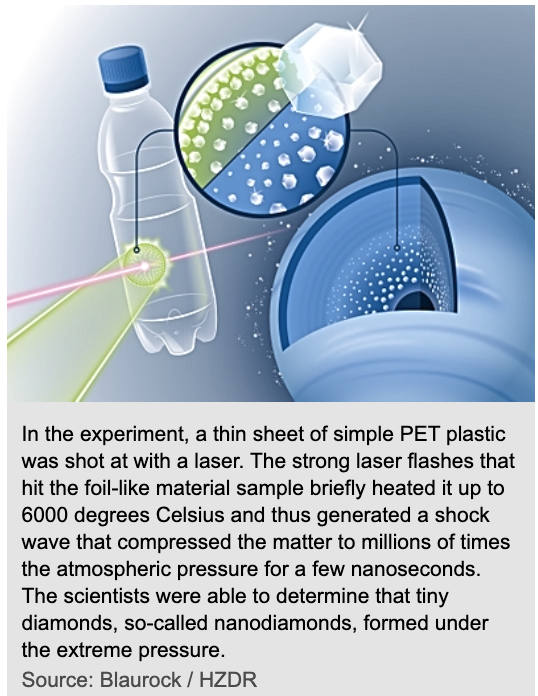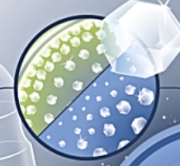Research team uses laser flashes to simulate the interior of ice planets – and spurs a new process for producing miniscule diamonds
What goes on inside planets like Neptune and Uranus? To find out, an international team headed by the Helmholtz-Zentrum Dresden-Rossendorf (HZDR), the University of Rostock and France’s École Polytechnique conducted a novel experiment. They fired a laser at a thin film of simple PET plastic and investigated what happened using intensive laser flashes. One result was that the researchers were able to confirm their earlier thesis that it really does rain diamonds inside the ice giants at the periphery of our solar system. And another was that this method could establish a new way of producing nanodiamonds, which are needed, for example, for highly-sensitive quantum sensors. The group has presented its findings in the journal Science Advances (DOI: 10.1126/sciadv.abo0617).

The conditions in the interior of icy giant planets like Neptune and Uranus are extreme: temperatures reach several thousand degrees Celsius, and the pressure is millions of times greater than in the Earth’s atmosphere. Nonetheless, states like this can be simulated briefly in the lab: powerful laser flashes hit a film-like material sample, heat it up to 6,000 degrees Celsius for the blink of an eye and generate a shock wave that compresses the material for a few nanoseconds to a million times the atmospheric pressure. “Up to now, we used hydrocarbon films for these kinds of experiment,” explains Dominik Kraus, physicist at HZDR and professor at the University of Rostock. “And we discovered that this extreme pressure produced tiny diamonds, known as nanodiamonds.”
この情報へのアクセスはメンバーに限定されています。ログインしてください。メンバー登録は下記リンクをクリックしてください。

